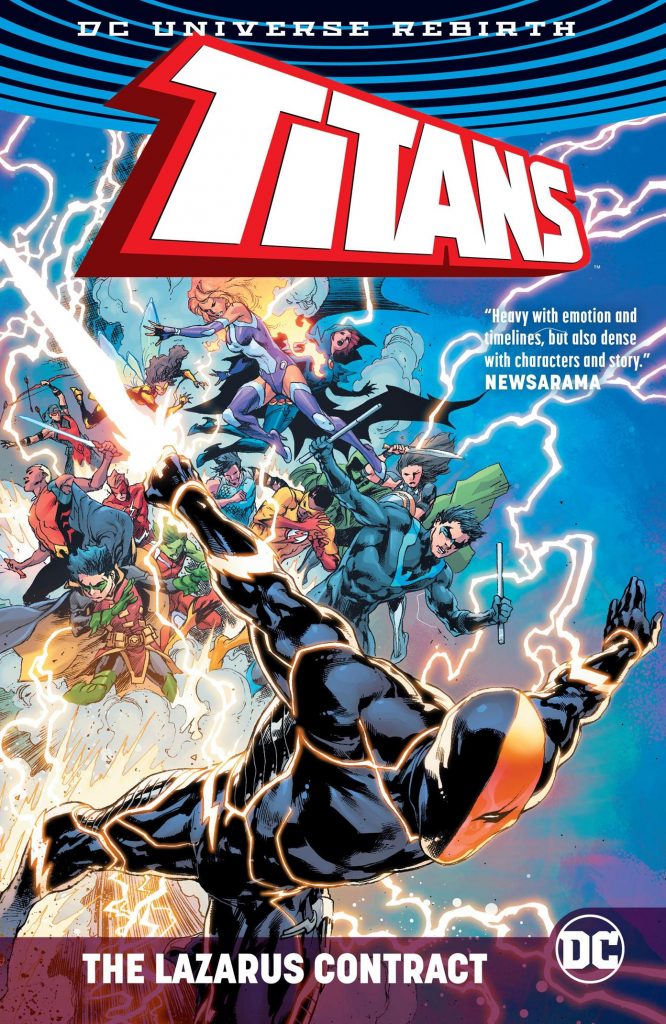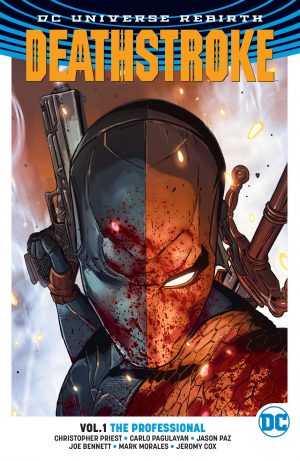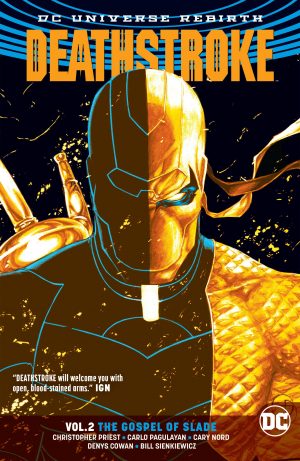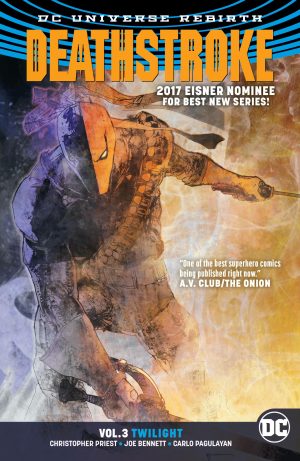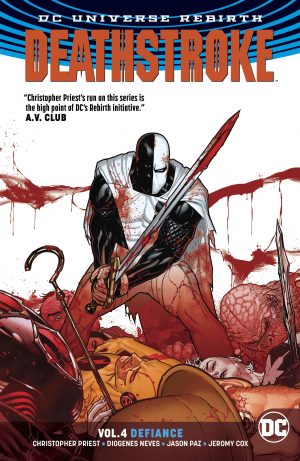Review by Karl Verhoven
Since being reintroduced and reconfigured with the modern day analogues of the original 1960s Teen Titans, the Titans have realised that there’s a background picture behind menaces they’ve faced that they’re just not getting into focus. The Titans may remain ignorant, but readers are aware that Deathstroke has been behind some of it, and the Titans now have a far more personal mission as in Made in Manhattan one of their number had portions of their memory stolen by catspaws. They believe this to be recoverable. It doesn’t take long before they have even bigger concerns.
Good cheer is instilled early, for British readers at least, when the Titans ask each other “Where’s Wally?”, and Deathstroke’s plan is revealed, to one of the Titans. He’s long blamed them for the death of his son, although their reading of events is understandably different, but he now believes he’s come up with a way of changing the past, hence the book’s title.
The reason for so many artists is because The Lazarus Project originally crossed into several different series, Teen Titans so far not mentioned. Even then there are complications like Phil Hester providing layouts for Khoi Pham, and Larry Hama providing breakdowns for Carlo Pagulayan and Roberto Viacava. The effect is a complete lack of artistic consistency with the art veering from the unconventional, but effective layouts of Brett Booth (sample spread left), along with his odd distorted people, though the solid storytelling of Paul Pelletier (sample spread right) to some strangeness elsewhere.
Dan Abnett, Benjamin Percy and Christopher Priest co-plot the entire arc, with the individual writers scripting chapters knowing where the cast are at the beginning, and where they have to be by the end. It’s in Priest’s chapters that the best revelations come, although they’re hinted at earlier. Some are best kept under wraps, but neat throughout are the wider implications of no-one remembering Wally West, and how that’s exploited. Priest also writes a convincingly snarky Robin, a wise Wintergreen, and given Deathstroke’s already fearsome skill set, what could make him more powerful? However, there are times when Priest’s writing isn’t properly pitched. Is a superhero crossover really the place for a page deliberating on Proust?
Such lapses are few, though, and despite the multitude of people involved, The Lazarus Project is solid, from the deceptive title to the epilogues that change some people. Titans readers skipping it and heading straight to A Judas Among Us will miss several significant items about their cast, for instance. Deathstroke readers will certainly be puzzled if they avoid this crossover and head straight from Twilight to Defiance, and the final chapter would definitely be a better fit for his solo collections as it features significant characters not seen earlier here. Forget that and put up with the constantly shifting art and the fun will be had.
